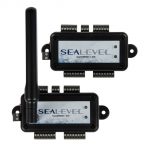The Difference an “I” Makes: IIoT vs. IoT
July 20, 2021Consumers utilize the Internet of Things (IoT) to automate and simplify everyday tasks while manufacturers use the Industrial Internet of Things (IIoT) to increase operational efficiency through remote monitoring and control. Both applications utilize the internet to connect physical devices to one another, but they are inherently different.
Commentators have sarcastically joked that the IIoT (Industrial IoT) is the same as the IoT, it’s just located on the factory floor. Not quite. General Electric first used the term “Industrial Internet” in 2012, shepherding in the Industrial Internet of Things (IIoT).
Katherine Elrod, “IoT vs. IIoT vs. Industry 4.0: What’s the difference and does it matter?”
IIoT Devices versus IoT Applications
IIoT applications in manufacturing require devices to communicate thousands of data points to a main control system. These devices include intelligent manufacturing systems, smart robotics, self-driving tractors, freight monitoring systems and smart helmets to monitor employee safety in mines and other hazardous locations.
Consumer IoT processes a significantly smaller amount of data and employs devices such as smart home automation, smart TVs, voice command systems like Amazon Alexa and Google Home and connected car applications.
There are certain industries where consumer and industrial IoT devices converge. For example, healthcare uses consumer IoT in smart watches with embedded blood pressure/heart rate monitors and industrial IoT enables machines to perform self-maintenance.
IIoT Hardware versus IoT Hardware
Many IIoT devices are used in hazardous locations or areas exposed to extreme temperatures, vibrations and shocks, so their hardware must be rugged. The hardware has a decades-long lifespan to reduce the maintenance required.
Consumer devices however are designed for low cost and their hardware has a short lifespan. A smart watch or smart phone is occasionally exposed to water, but their hardware is not rugged and is generally replaced rather than repaired.
IIoT Cybersecurity versus IoT Cybersecurity
Cybersecurity is a concern for all IoT products. Consumer and industrial IoT devices are susceptible to cyber-attacks such as service disruption, data theft and data or service manipulation.
IIoT applications exist in high-risk industries such as energy and oil and a large network breakdown would generate widespread consequences. On the other hand, consumer IoT devices have small networks and a malfunction would likely only have local implications.
IoT and IIoT applications continue to evolve and their devices are prevalent in all industries. With security in mind, Sealevel’s team of engineers designs IIoT devices to be rugged, reliable and versatile.
SeaConnect industrial IoT devices offer a variety of digital, analog and sensor I/O options coupled with SeaCloud’s built-in event engine to trigger actions. The SeaConnect 370 IoT devices is ideal for a variety of applications including broadcast automation, data acquisition, environmental monitoring and facility management.
SeaCloud offers a secure, robust, scalable, Industrial Internet of Things (IIoT) software platform that is designed to monitor, track, analyze and control data from SeaConnect and other Sealevel I/O devices. Options are available for data-at-rest applications such as condition monitoring and operational intelligence as well as data-in-motion activities to provide real-time, actionable information.
IIoT for Integrators
IIoT integration requires a deep understanding of a customer’s existing hardware in order to capitalize on proven technology and systems. Together with IIoT integrators, Sealevel is revolutionizing the way companies approach IIoT integration and enabling them to adopt predictive maintenance models, operate more efficiently and realize new revenue streams.

